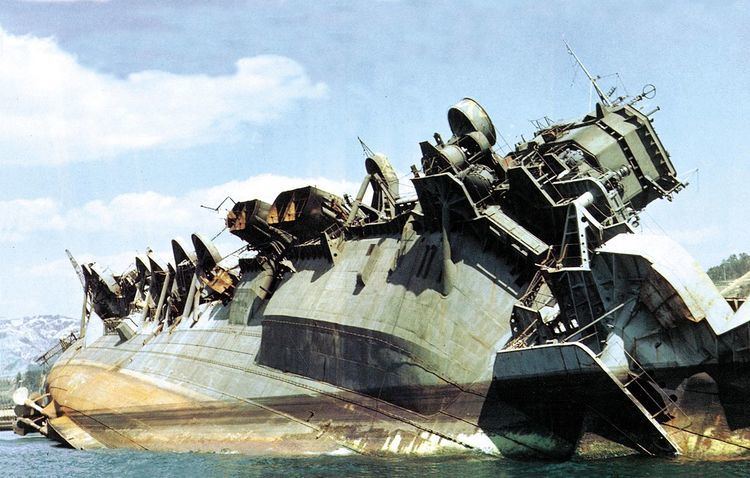Name Unryū class Preceded by Shōkaku class | ||
 | ||
Builders Yokosuka Naval ArsenalKure Naval ArsenalMitsubishi Heavy IndustriesKawasaki Shipbuilding Corporation Succeeded by Project Number G18(only a project) Subclasses Unryū (Ship #302 and 5001–5006)Ikoma (Ship #5007–5015) | ||
The Unryū-class aircraft carriers (雲龍型航空母艦, Unryū-gata Kōkūbokan) were World War II Japanese aircraft carriers. 16 carriers were planned under the Maru Kyū Programme (Ship #302 in 1941) and the Kai-Maru 5 Programme (#5001–5015 in 1942). However, only 3 of the Unryū class carriers were completed.
Contents
Design
In the lead-up to the Pacific War the Imperial Japanese Navy (IJN) attempted to build a large number of fleet carriers. For them to be built quickly, the design for these ships was based on the aircraft carrier Hiryū rather than the newer and more sophisticated Taihō or the Shōkaku class.
The Unryū-class aircraft carrier design was very similar to that of Hiryū. The ships were lightly built, and the main difference from Hiryū was that the carriers' island was placed on the starboard side of the ships. The carriers were capable of carrying 63 aircraft in two hangars, and were fitted with two elevators. The Unryū class carried a smaller quantity of aviation fuel than Hiryū with fuel tanks protected by concrete. The ships were fitted with the same propulsion system used in the aircraft carrier Sōryū to reach 34 knots (63 km/h), though Katsuragi was instead fitted with two turbines of the same type used in destroyers and had a maximum speed of 32 knots (59 km/h). The carriers also had a similar armament as Hiryū and were equipped with two Type 21 radars and two Type 13 radars.
Construction
The first three Unryū-class aircraft carriers were laid down in 1942 and construction of a further three began the next year. Eventually, only three (Unryū, Amagi, and Katsuragi) were completed and construction of the other three carriers (Kasagi, Aso and Ikoma) was abandoned in 1945.
Unryū class
Project number was G16. General production model of the Unryū class. 3 carriers were completed. The IJN unofficial designation for Unryū and Amagi were Modified Hiryū class (改飛龍型, Kai Hiryū-gata), Ship Number 5002–5006 were Modified Unryū class (改雲龍型, Kai Unryū-gata) also.
Ikoma class
Simplified and sped-up construction model of the Unryū class. They fitted shift-arrangement machinery (four sets of parallel two boilers and one turbine). Therefore, as for their chimneys/funnels/smokepipes/uptakes, those were intended to be spaced out. The IJN unofficial designation for this class was Modified Ship Number 302-class (改第302号艦型, Kai Dai 302-Gōkan-gata).
